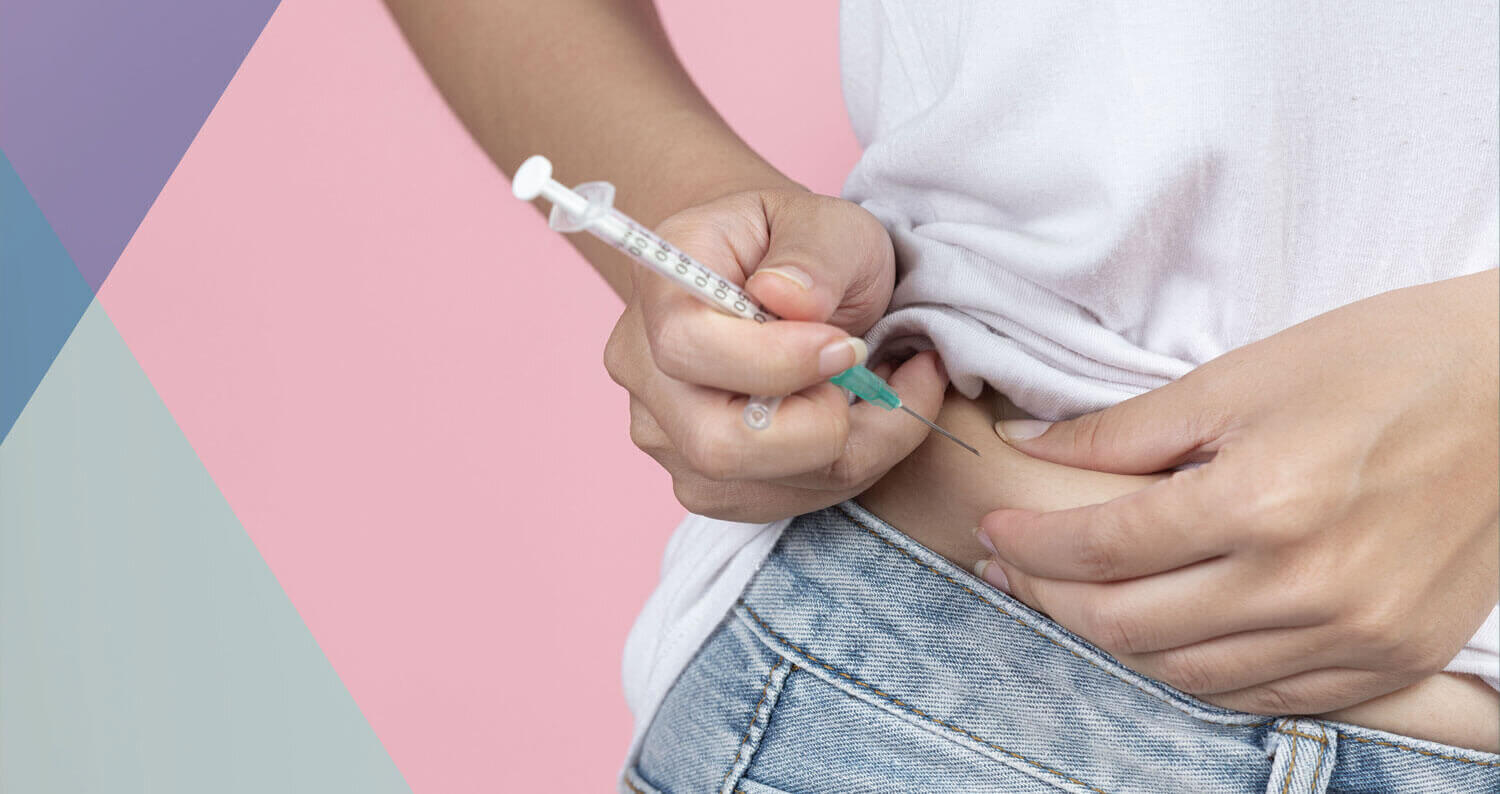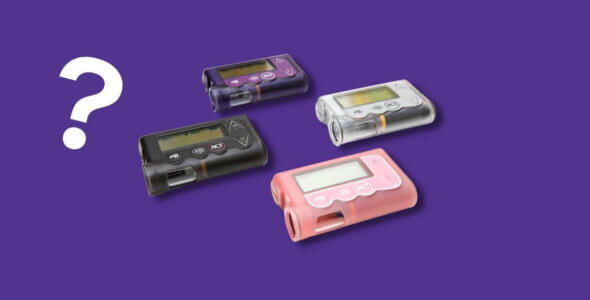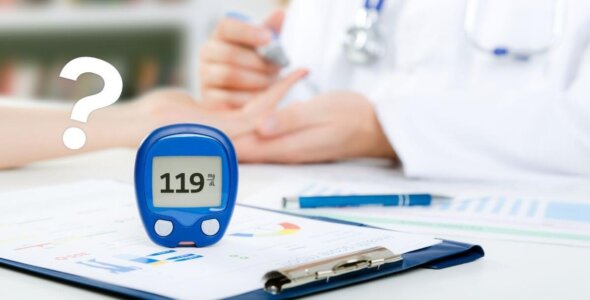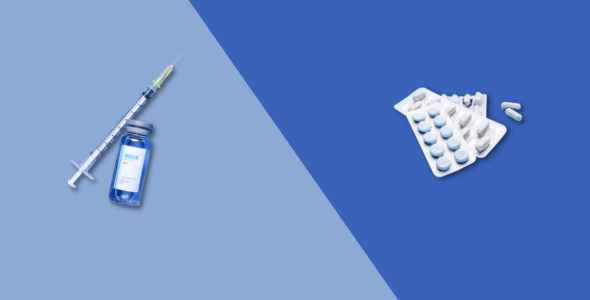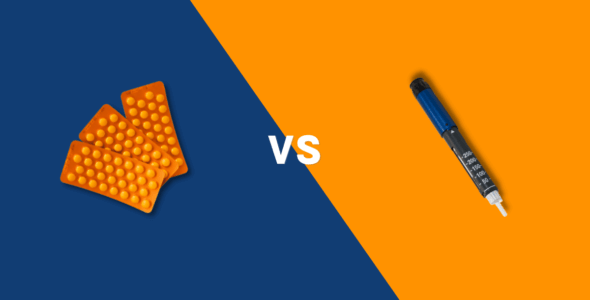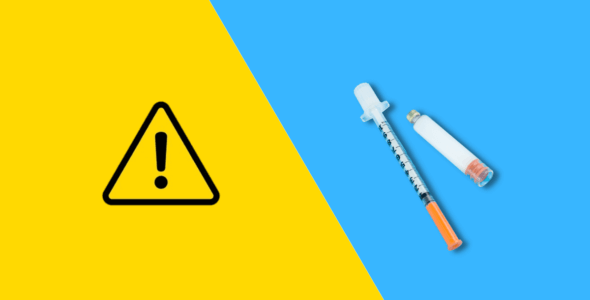Best insulin injection sites
Table of contents
Insulin is your best friend if you have type 1 diabetes. If you are a type 2 diabetic you may need insulin later in your life. Injecting insulin is the only effective way of getting it into your bloodstream. Taking insulin orally as a tablet is not an option as it is partially destroyed by digestive juices and becomes less active.
There are generally five different forms of insulin:
- Fast-acting – Apidra, Humalog, and Novolog. These begin to work about 15 minutes after injection
- Short-acting (regular) – Humulin R and Novolin R. These begin to work within 30 minutes after injection
- Intermediate-acting – Humulin N and Novolin N. Generally these work two to four hours after injection
- Long-acting – Levemir, Lantus, and Tresiba. Work several hours after injection
- Premixed insulins – Novolog 70/30. Contains a combination of intermediate-acting insulin with regular insulin
Types of insulin injection
Several different devices are available to deliver insulin into your body. Let us take a look at these:
- Syringe
- Insulin pen
- Insulin pump
- Jet injections
Your diabetes team will help you decide which method is best for you. Additionally, they will show you how to give yourself the injections and explain how the equipment works.
Syringes
Injection by needle or syringe is a traditional but popular way to insert insulin into your body. A vial and a needle are the two basic requirements. You use the needle to draw up the insulin through the vial and inject. Novolog is an option with this method. Insulin needles and syringes come in different sizes depending on the dose of insulin you need.
Insulin pens
Another popular choice is insulin injection pens. They are both convenient and portable. Pens are straightforward to use and deliver accurate dosing. There are several types to choose from but on the whole, they are all quite similar. The Novolog Flexi-pen and the Humalog kwikpen are possible options. It is simply a matter of which suits you best.
Insulin pumps
An insulin pump works by providing a continuous flow of insulin through a thin tube and needle. It is placed underneath the skin on your abdomen. It is attached to a small computerized device the size of a deck of cards. The pump provides a changeable but constant background insulin dose almost like how your body normally would.
Insulin pumps use short-acting and rapid-acting insulin. Long-acting insulin is not used since the pump is programmed to deliver a small amount continuously to keep your blood sugar levels even. Pumps require a lot of input from patients alongside training to use the device correctly. Apidra and Humalog can be used in a pump device.
Jet injectors
You hold the device close against the skin and push a button that releases a jet of air that forces insulin through the skin due to the high pressure. The injection device takes in a large quantity of insulin, enough for multiple insulin treatments. You measure the amount of insulin delivered by rotating one part of the device.
Where to inject insulin
Where you inject the insulin helps determine how fast it works. You need to inject insulin under your skin rather than into a vein or muscle. The fatty tissue just under your skin is the ideal place for insulin to be absorbed gradually. If you inject the insulin deeper into your muscle your body will absorb it too quickly. The effects may not last long and will additionally be more painful. Judging the depth correctly can be quite difficult, particularly if you are slim but it is important to master the technique to stay safe. The following areas are likely to have enough body fat to allow you to easily inject insulin:
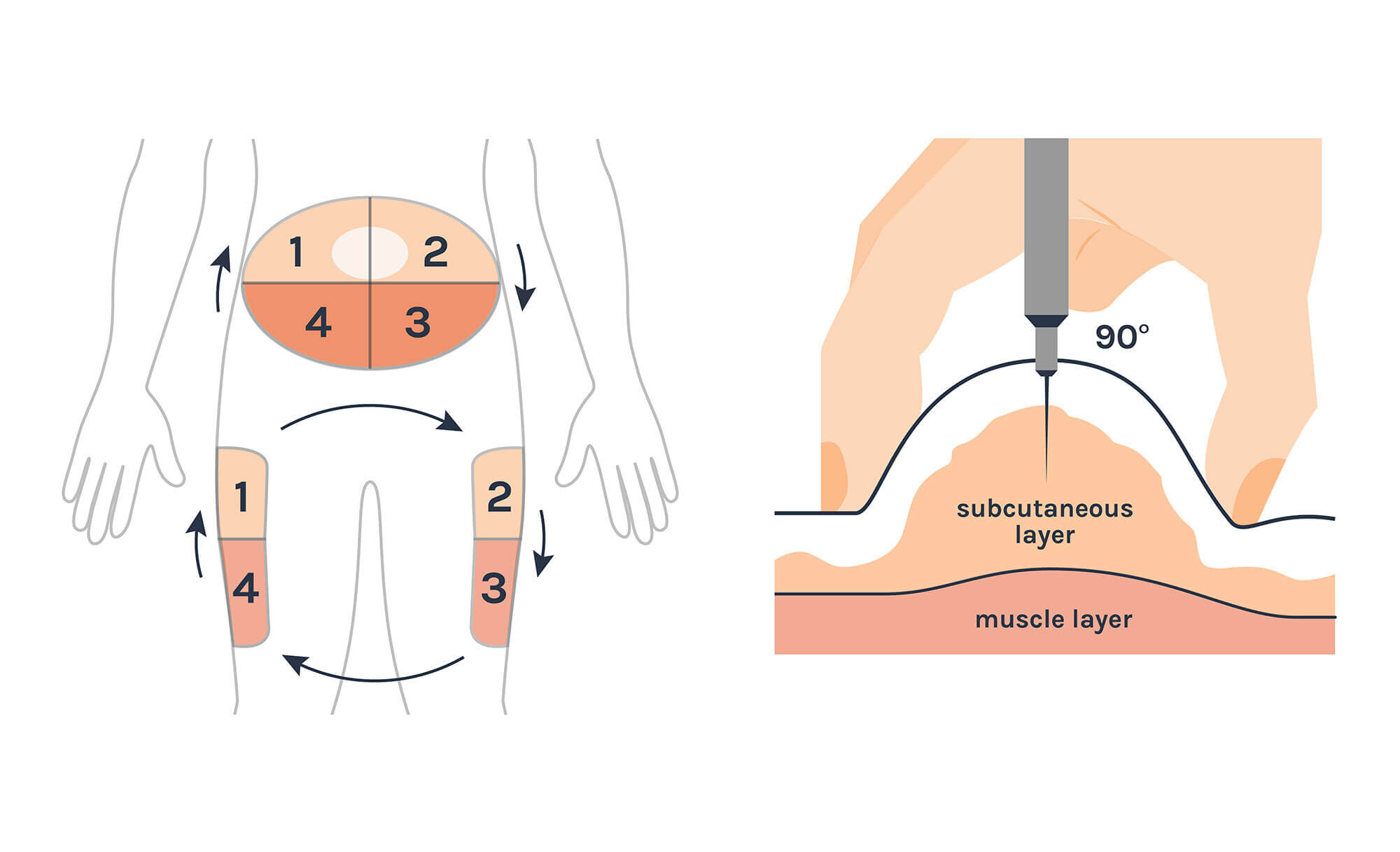
Abdomen
This part of your body is easy to reach and insulin is absorbed more quickly and predictably in the abdomen. The area between the waist and the hipbones, about 2 inches away from the belly button is the best location. Areas around scars, moles, or skin blemishes should be avoided.
Thigh
Around 4 inches down from the top of your leg and 4 inches up from your knee is the ideal location. Inject into the top and outer areas of your thigh. In this area the insulin is absorbed slowly. The inner thigh should be avoided as blood vessels are concentrated in that area.
Upper Arms
The fatty area on the back of your arm, between your shoulder and elbow, is another area suitable for injection. You need to inject into your less-used arm i.e. a right-handed person will inject into the left arm and vice versa. However, it can be tricky to reach on your own. Insulin is absorbed in a moderate speed from this site.
Lower back, hips, or buttocks
Draw an imaginary line across the top of the buttocks between the hips. This will give you a guide to the area best suited for injection. You must avoid injecting into the lower part of the buttocks. Like the upper arms, this is also a difficult area to reach on your own. Insulin is absorbed slowest from this site.
Rotating insulin injection sites
The importance of rotating insulin injection sites is to maintain effective insulin absorption. Small fatty lumps or hard lumps could develop in areas that are continuously used as sites. These can interfere with insulin absorption and also cause discomfort. Switching between injecting sites, for example, left and right arm or right and left thigh, and moving injection sites within the area will help prevent problems.
How is insulin absorbed?
The site of the insulin injection is important because this decides how fast the insulin can work.
- Abdomen – Insulin enters the bloodstream fastest here after an abdominal injection
- Upper arms – The body absorbs insulin with moderate speed but slower than an injection in the abdomen
- Lower back and thighs – Insulin enters the bloodstream slowest from these sites
How to inject insulin
- Gather together all your supplies – insulin, needle, syringe, and alcohol wipes
- Wash your hands with soap and water. Dry your hands thoroughly
- Clean your skin where you will inject the insulin with an alcohol wipe
- Roll the insulin bottle between the palms of your hands
- Draw the correct dose with the needle
- Take a fold of your skin. Pinch the skin and fat between your thumb and first finger
- Inject the needle at a right angle and push the insulin in
- Pull out the needle. Apply pressure on the site for 5-10secs
- Throw away your used inulin syringe carefully
Insulin injection sites complications
As part of your self-management care, you should be aware that lipo (lipohypertrophy) can be a complication with insulin injection sites:
- A lump or swelling under the skin where insulin has been repeatedly injected
- Fat and scar tissue form in these areas and become rubbery
- Insulin absorption in these areas can reduce or increase
If you develop lipo you are at a higher risk of unexplained low blood sugar, high blood sugar, or diabetic ketoacidosis.
Our do’s and don’ts for injecting insulin
Do’s:
- Rotate the injection site if keeping the body part consistent
- Inject insulin into the fatty area under the skin
- Numb your skin with ice before swabbing it with alcohol
- Wait for the alcohol to dry before injecting
- Ask your doctor for a chart to track your injection sites
- Recognize the warning signs of high blood sugar symptoms and low blood sugar symptoms
Don’ts:
- Inject into roots of body hair
- Stick to the same delivery device if it is not working for you
- Store insulin incorrectly – you must store opened or unopened insulin at room temp for 1 month only
Safe needle disposal
Safe needle disposal is an important responsibility for a diabetic. This will be discussed with you by your healthcare provider. Regulations and procedures vary by location. Find out what your state requires by calling the Coalition for Safe Community Needle Disposal at 1-800-643-1643, or visit their site at http://www.safeneedledisposal.org
Insulin injection sites FAQs
Where should you not inject insulin?
Insulin should not be injected into the muscle. Also, do not inject insulin into areas where you have a wound or bruising.
What angle is insulin injected?
Patient information given by the American Diabetes Association advises the needle is inserted straight in at a 90-degree angle. You do not have to pinch up the skin unless you are using a longer needle (6.8 to 12.7 mm). Small children or very thin adults may need to inject at a 45-degree angle. Insulin should go into a fatty layer of your skin called the subcutaneous tissue.
How many units of insulin is normal?
You and your doctor will decide the best schedule and insulin dose for you. Your doctor may work out your first dose based on your weight. If you take long-acting insulin your doctor may work on 0.2 units for every 2.2 pounds. This may go up by 2-4 units every 3 days based on your target blood sugar level.
How can I get insulin without a needle?
An inhaled insulin product called Afrezza is available. Afrezza is a rapid-acting inhaled insulin that is administered at the beginning of each meal. It can be used by adults with type 1 or type 2 diabetes.
What size needle is used for insulin?
Needle size lengths for insulin available are 4mm, 6mm, 8mm, 10mm, and 12mm. Your doctor will advise you on the most suitable length for you.
Is it OK to inject cold insulin?
Manufacturers recommend storing your insulin in the refrigerator however injecting cold insulin can sometimes make the injection more painful. To avoid this, store the bottle of insulin you are using at room temperature. Insulin kept at room temperature will last approximately one month.
Medically reviewed
A medical professional has reviewed this article.


Jamie Winn, PharmD
Jamie Winn, PharmD
Dr. Jamie Winn received his Doctor of Pharmacy in 2002 from the University of South Carolina College of Pharmacy, Columbia, SC. Jamie is a medical reviewer for NiceRx.

